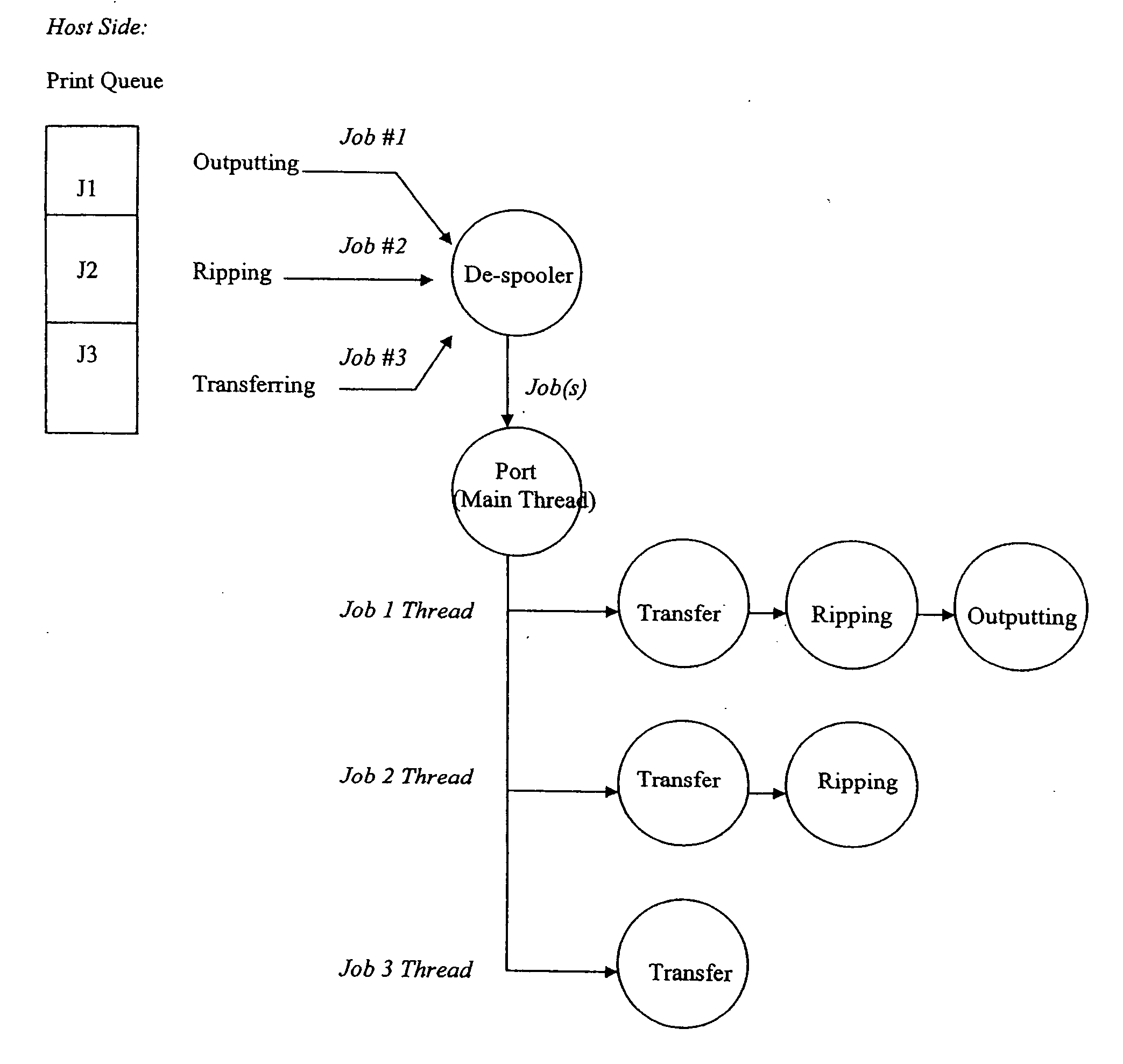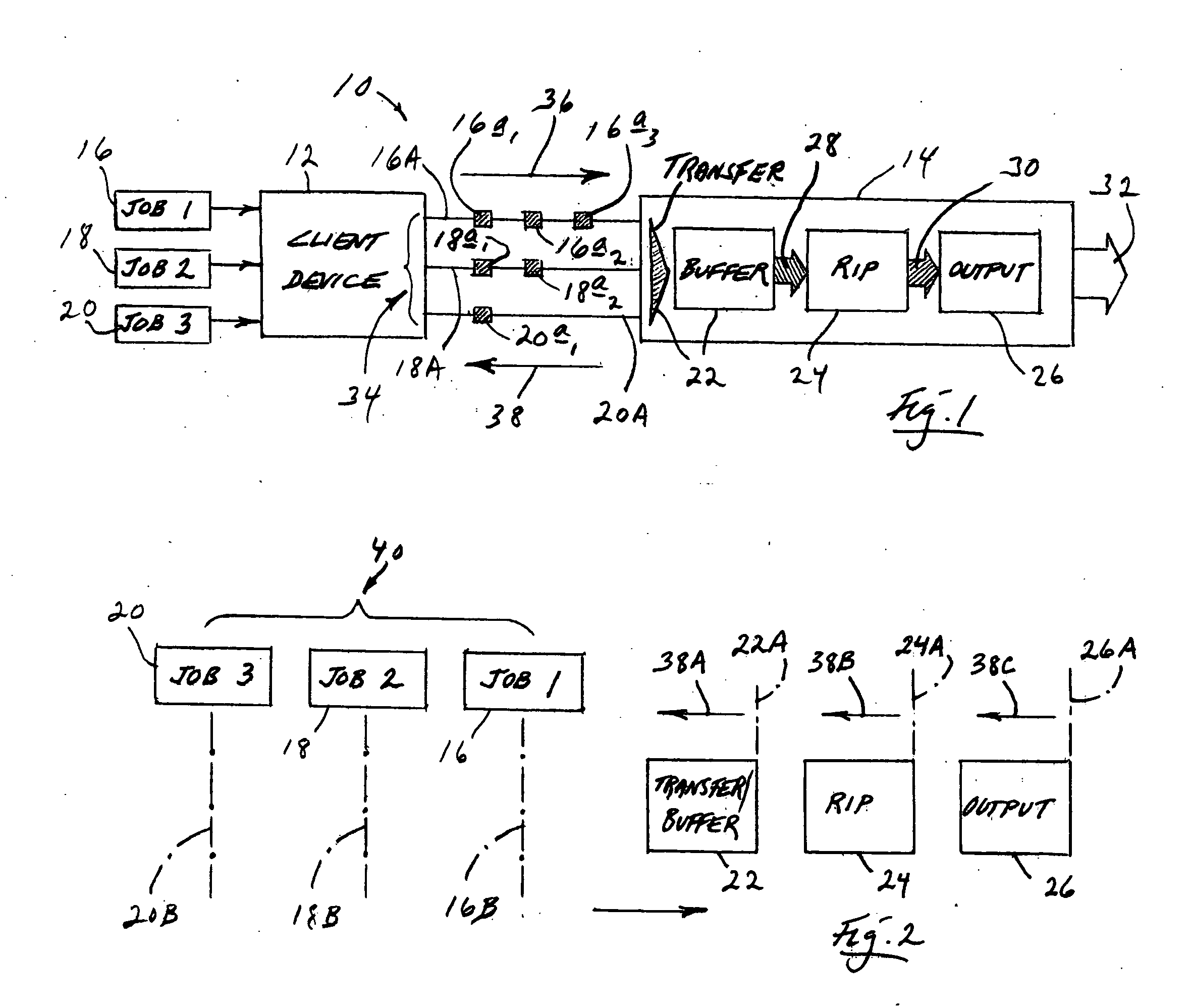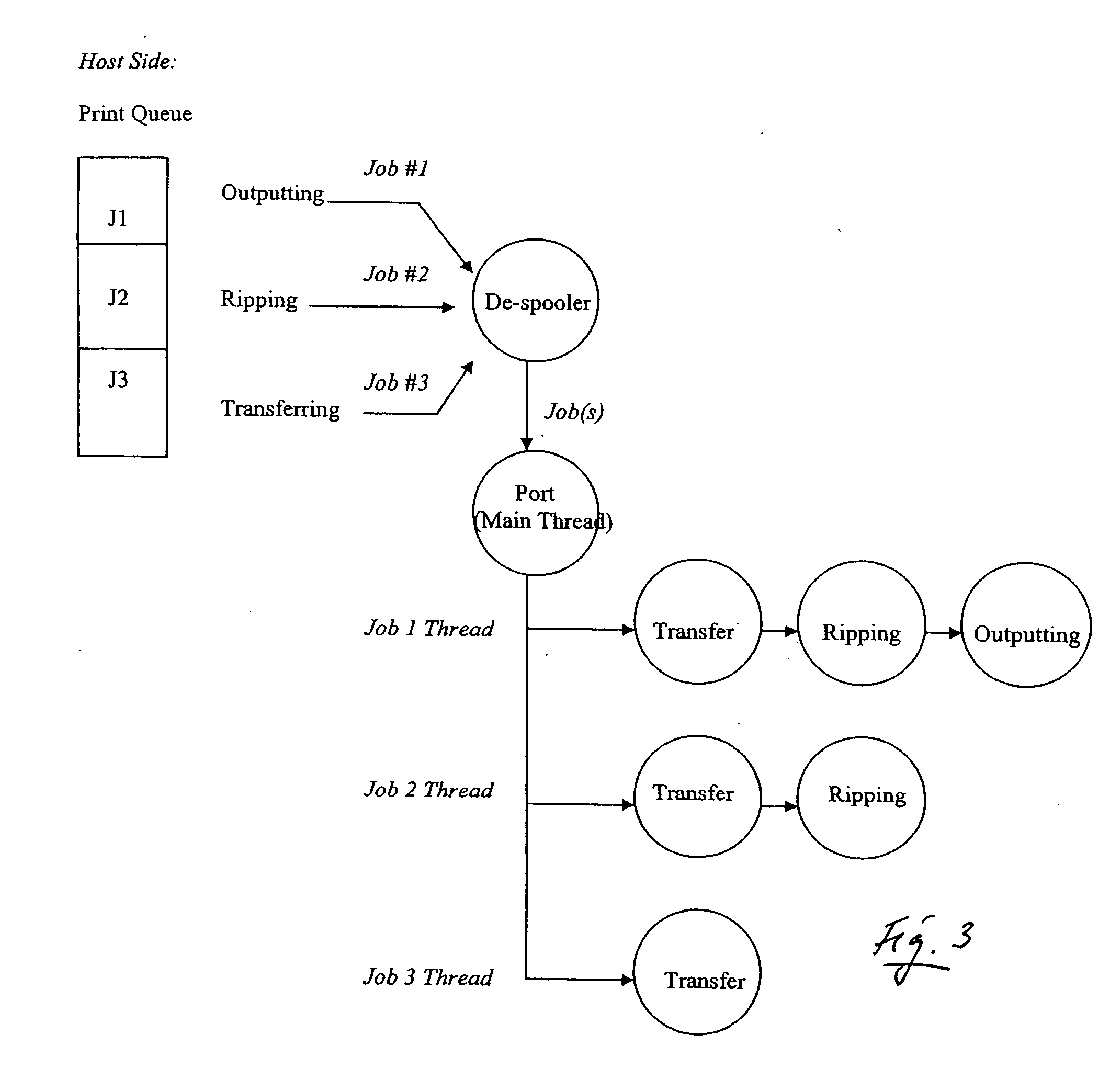Imaging job monitoring and pipelining
- Summary
- Abstract
- Description
- Claims
- Application Information
AI Technical Summary
Benefits of technology
Problems solved by technology
Method used
Image
Examples
Embodiment Construction
[0049] Referring first to FIGS. 1 and 2, shown generally at 10 in FIG. 1 is a high-level schematic illustration of the architecture of the methodology of the present invention. In FIG. 1, a block 12 represents a host computer, or host, or client device, a block 14 represents an imaging device, such a an MFP device, and blocks 16, 18, 20 represent three imaging jobs labeled, respectively, “Job 1”, “Job 2” and “Job 3”. For the purpose of illustration herein, it will be assumed that these three jobs have been requested in the serial order of 16, 18, 20, and that FIG. 1 can be used both to describe the serial response and behavior of this invention in relation to that job request order, and also to illustrate a moment in time wherein all three jobs are being handled / processed simultaneously (in parallel) in three different, specific processing states referred to herein (a) as transferring / buffering, (b) raster image processing (or rasterizing, RIP), and (c) outputting. Sub-block 22 (alo...
PUM
 Login to View More
Login to View More Abstract
Description
Claims
Application Information
 Login to View More
Login to View More - R&D
- Intellectual Property
- Life Sciences
- Materials
- Tech Scout
- Unparalleled Data Quality
- Higher Quality Content
- 60% Fewer Hallucinations
Browse by: Latest US Patents, China's latest patents, Technical Efficacy Thesaurus, Application Domain, Technology Topic, Popular Technical Reports.
© 2025 PatSnap. All rights reserved.Legal|Privacy policy|Modern Slavery Act Transparency Statement|Sitemap|About US| Contact US: help@patsnap.com



